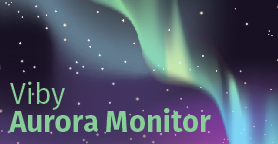For concurrent forecasts, the evolution of the horizontal magnetic field components is analyzed. Depending on the activity within the last hour, green/yellow/red alerts are displayed in plot.
| Activity alert criteria assess the last 60 minutes: |
| Quiet geomagnetic conditions |
Disturbed geomagnetic conditions |
Considerable geomagnetic activity |
| Within the last hour, less than ΔB<80 nT, corresponding to <K3 |
Within the last hour, less than ΔB<140 nT, corresponding to K4 |
Within the last hour, ΔB>140 nT, corresponding to K5 |
| Flux change speed alert criteria assess the last four hours: |
| Quiet geomagnetic conditions |
Disturbed geomagnetic conditionsons |
Considerable geomagnetic activity |
| Outburst less steep than ΔB<40 nT/10min |
Outburst less steep than ΔB<80 nT/10 min |
Outburst less steep than ΔB<180 nT/10 min |
Outburst steeper than ΔB>180 nT/10 min |

